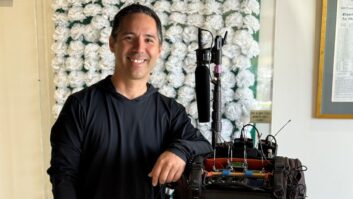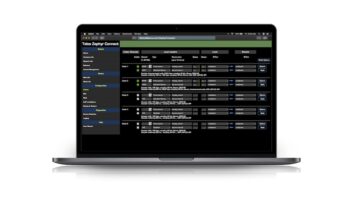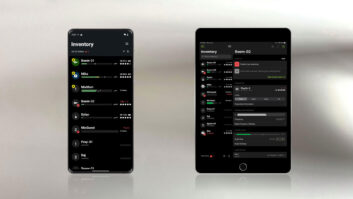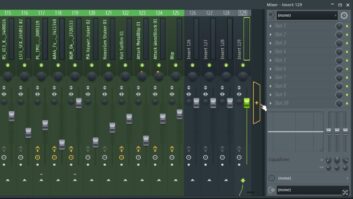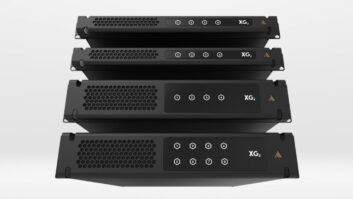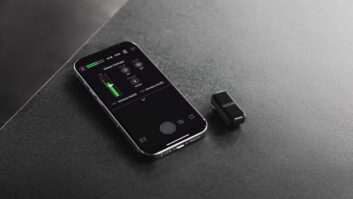Athens, GA—“I don’t like big, slick, shiny, processed, grid-locked, auto-tuned trash,” says Jesse Mangum in Athens Rising, a 2018 documentary about the Georgia college town’s cultural landscape. “I want to put at least a little bit of the opposite in the world.”
Mangum began building his recording studio, The Glow, in a steel-framed structure behind his house several miles outside Athens in 2008. It took four years to complete, funded, piece by piece, by tips from whatever work he could find. “It was always coffee shops, the only entry-level job I could ever stand,” he says.
Doing his homework, Mangum built out the 30-by-40-foot facility to the ideal ratios using room-within-a-room construction methods. “I built out the control room first. Drywall wasn’t my favorite hobby and I wanted to get back to it and at least do some mixing.”
Mangum originally established The Glow in Jacksonville, FL, where he grew up, and where his musician father, Larry, had a recording studio until the early ’90s. His father frequently visited to help with The Glow’s construction, Mangum reports.

Today, he has outfitted The Glow with nothing but analog equipment. Well, almost. Apart from his DAW, he says, “I just bought my first digital reverb, the Make Noise Erbe-Verb, a Eurorack module made for the synth market. It’s the most like a room reverb of anything I’ve encountered. I feel like the Eurorack thing is something you’ll see more and more of in studio environments.”
Mangum says he found early digital processors to be noisy, and not in a good way. Although he came up working in the box, he says, he quickly realized that the GUI was replicating physical objects.
Related: Striking Gold at Eldorado Recording Studios, by Steve Harvey, April 26, 2018
“It confounds me to have so many plug-ins; I like having fewer options. For a while I was militant about it—I was just going to use this mixer and the hardware that I have, no plug-ins.” He has since relaxed the rules, he says, for the sake of marketing his services to a larger audience.
His analog workflow lends itself to the sound he appreciates. “A lot of the records I love are from the earlier years, when they used a lot less. They had more tubes and transformers in the path. That’s what I’m working toward, hitting as many of those as I can on the way in.”

Mangum’s console is a 1997 large-format Crest Century VX more typically found at FOH. “I was looking for a desk that was balanced and had a certain feature set. It’s a split console, which is how I like to track,” he says.
“It had everything I wanted, and I liked the way it looked—as close to an SSL as I was going to get. And you can get them for $2,000.”
The Crest desk is fitted with Jensen transformers and has been upgraded with Jim Williams’ mic preamps. “I use external preamps now, but if I needed to, I would be perfectly happy tracking with those.”
Want more stories like this? Subscribe to our newsletter and get it delivered right to your inbox.
Mangum’s favorite outboard mic preamp is the Classic Audio Products Inc. VP28, a two-stage 500 Series module. “On overheads, you can crank the input all the way, turn the output all the way down, and the waveform looks like a square wave—clipped, but you won’t hear that. You hear the sound, but in a very beefy way. That’s a sound I was unable to get with the APIs. The VP28 is really special. If I had a whole rack of those and nothing else to track with, I would be happy,” he says. “Everything CAPI does is great; I have one of their equalizers.”

Another discovery is the RSP Technologies Saturator, an inexpensive device promising “tube warmth for digital recording.” Straight out of the box, it’s “the worst, worst sound in the world,” laughs Mangum. “It’s an indescribable, awful, useless sound. It was a rack-filler until one of the tubes died.” But when he changed out the tubes with alternate models, he says, “It did something magical. It’s such an amazing little box. I have two now. I keep one on my master bus for pretty much everything. There’s nothing, to me, that sounds as close to overdriven tape as that does.”
Mangum once owned two Neumann U 87s, “but one of my biggest life lessons was to acknowledge that I didn’t like how they sounded. That’s blasphemy, I know. I guess I don’t like sparkly high end. When I sold the U 87s, I bought the Lauten Atlantis, which is not overly bright and has a color switch that allows you to make it even darker.”
After reading former Motown engineer Bob Ohlson’s endorsement of beyerdynamic’s MC740 condenser as a U 67 alternative, Mangum sought one out and is looking for a second. “I need a pair. They’re $1,200 on average in really good condition. I’m a big beyerdynamic fanboy,” says Mangum, whose mic locker is well stocked with the brand.
Related: A Studio with Social Media in Mind, by Steve Harvey, March 26, 2018
It’s hard to compare the MC740 to the Neumann since he doesn’t own a U 67, he says, “but recording things that are typically done with a U 67, like a guitar cabinet, it’s in the ballpark of what my dreams tell me a U 67 sounds like.

“It’s very bright on the top end but subdued in the upper mids, that area I don’t like. It’s going to be harder for me to make low-fidelity recordings just because it sounds so nice.”
Lo-fi is definitely a key part of his career, too. His previous studio was rudimentary, offering little more than a PreSonus FirePod interface and some SM57s, he reports—but the first project through the door, 2007’s Wizard of Ahhhs EP by Jacksonville band Black Kids, blew up and instantly became Mangum’s calling card. “I had never recorded a band before; it gave me this career,” he says.
The gritty, saturated, reverb-soaked sound also offered a signpost to Mangum’s Goldilocks sonic aesthetic: not too low-fidelity, not too high-fidelity. “I’m just on the upper end of mid-fidelity,” he says in Athens Rising. “Any higher than that is just too slick for me.”
The Glow Recording Studio • www.theglowrecordingstudio.com
Classic Audio Products Inc. • www.capi-gear.com
Make Noise • www.makenoisemusic.com

